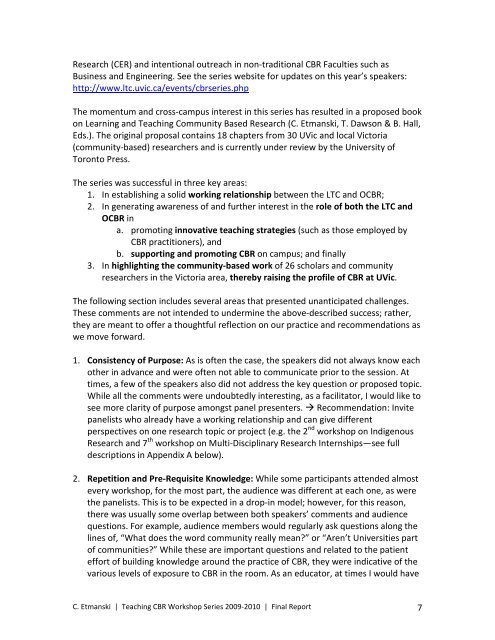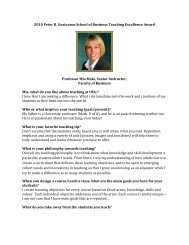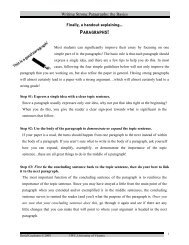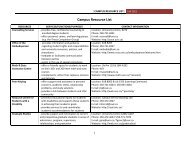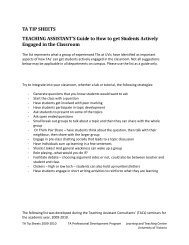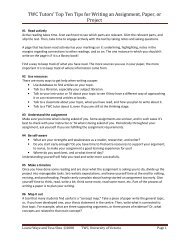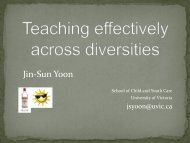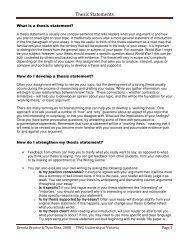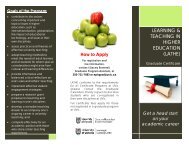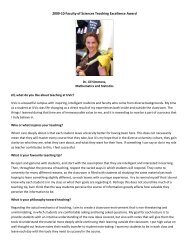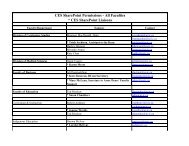C. Etmanski, Teaching CBR 2009-10 Workshop Series Final Report
C. Etmanski, Teaching CBR 2009-10 Workshop Series Final Report
C. Etmanski, Teaching CBR 2009-10 Workshop Series Final Report
- No tags were found...
Create successful ePaper yourself
Turn your PDF publications into a flip-book with our unique Google optimized e-Paper software.
Research (CER) and intentional outreach in non-traditional <strong>CBR</strong> Faculties such asBusiness and Engineering. See the series website for updates on this year’s speakers:http://www.ltc.uvic.ca/events/cbrseries.phpThe momentum and cross-campus interest in this series has resulted in a proposed bookon Learning and <strong>Teaching</strong> Community Based Research (C. <strong>Etmanski</strong>, T. Dawson & B. Hall,Eds.). The original proposal contains 18 chapters from 30 UVic and local Victoria(community-based) researchers and is currently under review by the University ofToronto Press.The series was successful in three key areas:1. In establishing a solid working relationship between the LTC and O<strong>CBR</strong>;2. In generating awareness of and further interest in the role of both the LTC andO<strong>CBR</strong> ina. promoting innovative teaching strategies (such as those employed by<strong>CBR</strong> practitioners), andb. supporting and promoting <strong>CBR</strong> on campus; and finally3. In highlighting the community-based work of 26 scholars and communityresearchers in the Victoria area, thereby raising the profile of <strong>CBR</strong> at UVic.The following section includes several areas that presented unanticipated challenges.These comments are not intended to undermine the above-described success; rather,they are meant to offer a thoughtful reflection on our practice and recommendations aswe move forward.1. Consistency of Purpose: As is often the case, the speakers did not always know eachother in advance and were often not able to communicate prior to the session. Attimes, a few of the speakers also did not address the key question or proposed topic.While all the comments were undoubtedly interesting, as a facilitator, I would like tosee more clarity of purpose amongst panel presenters. Recommendation: Invitepanelists who already have a working relationship and can give differentperspectives on one research topic or project (e.g. the 2 nd workshop on IndigenousResearch and 7 th workshop on Multi-Disciplinary Research Internships—see fulldescriptions in Appendix A below).2. Repetition and Pre-Requisite Knowledge: While some participants attended almostevery workshop, for the most part, the audience was different at each one, as werethe panelists. This is to be expected in a drop-in model; however, for this reason,there was usually some overlap between both speakers’ comments and audiencequestions. For example, audience members would regularly ask questions along thelines of, “What does the word community really mean?” or “Aren’t Universities partof communities?” While these are important questions and related to the patienteffort of building knowledge around the practice of <strong>CBR</strong>, they were indicative of thevarious levels of exposure to <strong>CBR</strong> in the room. As an educator, at times I would haveC. <strong>Etmanski</strong> | <strong>Teaching</strong> <strong>CBR</strong> <strong>Workshop</strong> <strong>Series</strong> <strong>2009</strong>-20<strong>10</strong> | <strong>Final</strong> <strong>Report</strong> 7


